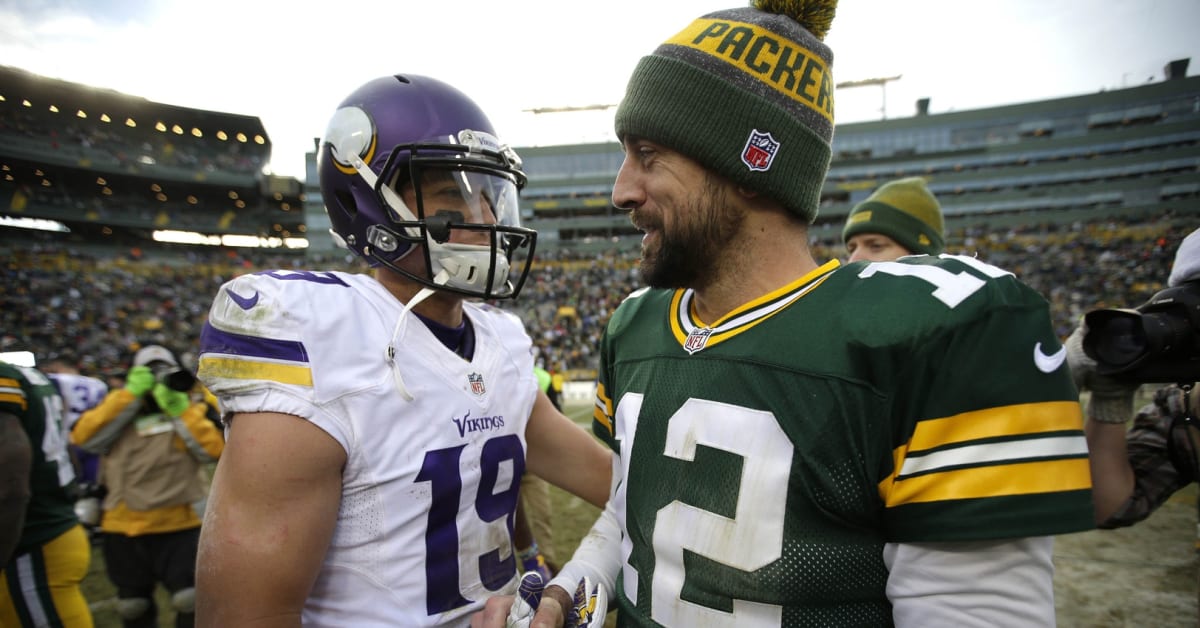
Is it time for the Vikings and Packers to reset?
Since the NFL realigned in 2002, the NFC North has been dominated by the Minnesota Vikings and the Green Bay Packers. The two rivals have combined for 17 division titles in the past 21 seasons and 14 titles in the past 16 seasons.
The divisional hierarchy has left the Chicago Bears and Detroit Lions as afterthoughts, but that's about to change. There are several reasons for the Bears and Lions to be optimistic heading into next season while the Vikings and Packers are staring into an uncertain future.
With their glory days fading into the horizon, it may be time for the Vikings and Packers to reset as the Lions and Bears take over the top spots in the division.
Take a look at where the Vikings are heading into the offseason. They have several aging veterans. They are currently $24.5 million over the salary cap. Kirk Cousins will carry a massive cap hit for next season and several younger players will be due for contract extensions.
If this sounds familiar, this was the exact spot the Vikings were in last off-season. Sure, the Vikings won 13 games and their first division title since 2017, but shuffling money into the future has put them into a worse position this offseason.
Adam Thielen's contract is one example as he was rumored to be a prime restructuring candidate last offseason. Instead, the Vikings wound up giving him a raise and he rewarded them with a career-low 1.08 yards per route run. Entering his age 34-season, Thielen is now set for a $19.9 million cap hit in 2023.
Dalvin Cook signed a four-year, $63 million contract extension on the eve of the 2020 season. Although Cook posted his fourth-straight 1,000-yard season, he ranked 36th among running backs (min. 100 carries) with 24 yards below replacement according to Football Outsiders. Cook carries a $14.1 million cap hit in 2023.
Then there is the albatross known as Cousins's contract. Vikings general manager Kwesi Adofo-Mensah said last week that he expects Cousins to return as the team's starting quarterback next season, but it remains to be seen if he will do so at a $36.25 million cap hit.
Even if the Vikings decide to offer him another short-term extension such as the one-year, $40 million extension that reduced his cap hit last offseason, he will turn 35 next August. While some people will point to Tom Brady and Aaron Rodgers as ageless wonders, Russell Wilson took his "Let's Ride!" mantra right off the cliff in Denver during his age-33 season.
If Cousins goes off the cliff, he could join several of his defensive teammates such as Eric Kendricks and Harrison Smith, who are far removed from being key members of the No. 1 defense in 2017.
The temptation will be there for the Vikings to run back a 13-4 team, but losing in the first round of the playoffs is just as bad as not making them at all – which brings us to the team on the other side of the border.
The Packers came into 2022 with Super Bowl aspirations after reaching the NFC Championship Game in 2020 and earning the No. 1 seed in the NFC in 2021. With Rodgers coming off back-to-back MVP awards, the Packers were set to be a contender – until they weren't.
Rodgers failed to elevate an inexperienced receiver corps. The running game was used sporadically and David Bakhtiari was limited to 11 games as he battled knee issues.
The result was the Packers' first losing season since 2018 and just their third losing season since 2008. Perhaps the Packers' reasons for "running it back" were more justified, but they also are headed into a complicated offseason.
Rodgers agreed to a five-year, $150 million contract extension last offseason that has him under contract through 2026. He carries a $31.6 million cap hit for next season but that number balloons to $40.7 million in 2024 and $59.3 million in 2025.
Even if the Packers trade Rodgers, they would eat $40.3 million in dead money that would count against the salary cap.
The financial issues don't stop there as the Packers have five players with a cap hit over $20 million. That leaves Green Bay $16.2 million over the salary cap and unable to rebuild a roster that has several flaws.
Compare these situations to what's going on in Detroit and Chicago. Vikings and Packers fans probably laughed as Dan Campbell double-fisted Starbucks and blasted Metallica while the Lions went 3-13-1 in 2021 but his Lions went 3-1 against Green Bay and Minnesota last season.
Almost two years after moving on from Matthew Stafford, the Lions have a promising nucleus, $15 million in cap space and two first-round picks in the upcoming draft – including the sixth overall pick acquired from the Los Angeles Rams.
Things don't appear to be as rosy in Chicago after the Bears went 3-14 season, but that step back paved the way for a brighter future. The Bears own the No. 1 overall pick in this year's draft, which means that the NFC North could have to deal with Will Anderson Jr. or Bryce Young for the next 10 years. Either that or the Bears could trade the first pick for a bunch of draft picks.
The Bears also have $92 million in cap space, which paired with a cheap quarterback gives them free rein to bolster the roster in free agency.
That's a far cry from the Vikings and Packers, who will likely go through another offseason of financial gymnastics to try and be competitive in 2023.
While taking a step back doesn't mean that the Vikings and Packers will be tanking for Caleb Williams in 2024, it may be the best way to keep up with the Bears and Lions, who appear to be on the rise.







